History
A WORLD-CLASS PORT, CENTURIES IN THE MAKING.
Set in the best natural haven on England’s east coast, Harwich has played a vital role in Britain’s maritime history for centuries.
Always accessible, whatever the tide or weather, Harwich Haven was much valued in the 19th century by the masters of sailing ships seeking shelter – and it has remained one of the UK’s most important deep-water harbours.
Harwich’s role as a packet station for the carriage of passengers and mail to the Netherlands dates back at least to the 17th century. But it was a bold decision by the Great Eastern Railway Company in the second half of the 19th century to transform the port and set the foundations for what is today Harwich International, a world-class deep-water facility.
Britain's most important passenger port
The railway company, anxious to expand its operations, decided to create an entirely new port based on the reclaimed marshland of Ray Island. Parkeston Quay was opened in 1883 and quickly became Britain’s most important passenger port, linking England with Belgium and the Netherlands.
Throughout the 20th century and into the 21st, Harwich International has retained its close ties with Europe, with Ro-Ro ferry links for both passengers and freight to ports in the Netherlands, Germany and Scandinavia.
But it has also diversified and today’s activities encompass liquid and dry bulks, general cargo, containers and a thriving cruise business.
In 1998, Harwich International was acquired by Hutchison Ports and marked a new and exciting chapter in the port’s history.

1883
Parkeston Quay is officially opened by Charles H. Parkes, Chairman of the Great Eastern Railway Company

1903
Services begin between Parkeston Quay and the Hook of Holland.
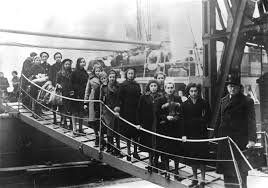
1938
First Winton Train arrived at Harwich in 1938 bringing 196 children from a Berlin Jewish orphanage
1939
Parkeston Quay is requisitioned by the Admiralty for naval purposes.

1946
The quay suffers extensive damage in air raids during the war.
1964
The Carless refinery opens next to the port.
1967
"MS Winston Churchill" is introduced to Harwich – Esbjerg route.
1968
Sister ships ‘Koningin Emma’ and ‘Prinses Beatrix’ had served the Harwich to Hook of Holland route from the end of the Second World War until this year, when they are finally scrapped. This same year sees the route convert to a freight/passenger service with the introduction of the ‘Koningin Juliana’.
1972
Parkeston Quay Passenger Terminal offically opened

1974
The 130-metre Ro-Ro ship ‘St Edmund’ comes into service and remains on the Hook of Holland route until being requisitioned by the UK Ministry of Defence in 1982 during the Falklands conflict.
1978
After a naming ceremony in London, ‘MS Dana Anglia’ enters service on the Esbjerg route.
1983
The ‘St Nicholas’, the largest Superferry on the North Sea at the time, commences service from Harwich.
1986
Passengers through the port exceed 2 million for the first time this year.
1987
The ‘Koningin Beatrix’, with capacity for up to 2,100 passengers, joins the Hook of Holland route.
1989
Passenger Terminal building refurbished and extended
1989
Last call of the MS Braemar and the end of the summer service to Kristiansand, Norway, which had been operated by Fred Olsen Lines since 1967.
1992
Construction of No2 linkspan is completed, in readiness for vessels of 200 metres in length overall.
1994
The number of trade vehicles moving through the port peaks at nearly 270,000 in a year.
1997
A £12 million development is completed to accommodate the ‘Stena Discovery’ fast ferry.
1998
Harwich International becomes part of Hutchison Ports (UK) Ltd
1999
29 August sees the simultaneous berthing of three cruise ships.
2002
Stena launches a new freight route to Rotterdam in September, providing three crossings per day and coinciding with the opening of a new port access road and freight entrance.
2002
A fond farewell to the last of the ‘white ships’ serving Harwich, as the ‘Dana Anglia’ and ‘Admiral of Scandinavia’ are replaced by modern ro-pax vessels.
2002
Dame Judi Dench visits Harwich International Port to christen Carnival Legend.
2006
First treble call received since 1999
2007
End of the Stena Line HSS Service.
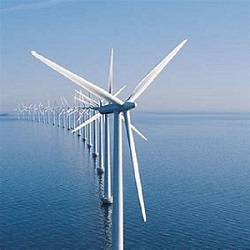
2009
Harwich is chosen as the construction base for the Greater Gabbard Offshore Wind Farm.

2010
Introduction of Stena Line Superferries onto the Harwich to Hook of Holland route.
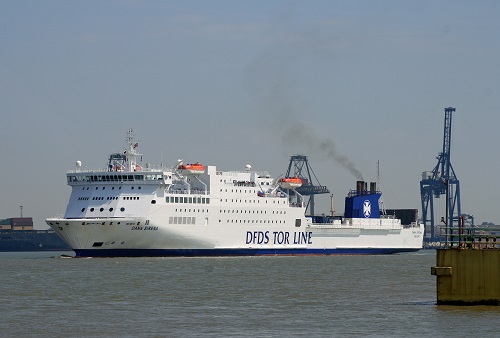
2014
End of the DFDS Esbjerg service after over 100 years of operation.
2017
Launch of new corporate identity and website
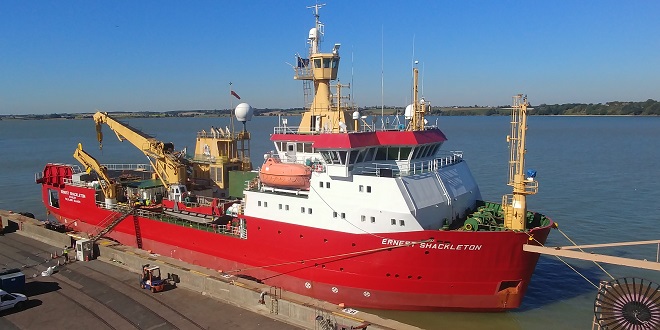
2018
Arrival of RRS Shackleton - an ice-strengthened Royal Research Ship operated by the British Antarctic Survey. Mobilised at Harwich before embarking on their Antarctic field season.
2018
£10 million state-of-the-art operations & maintenance (O&M) base for Galloper Offshore Wind Farm
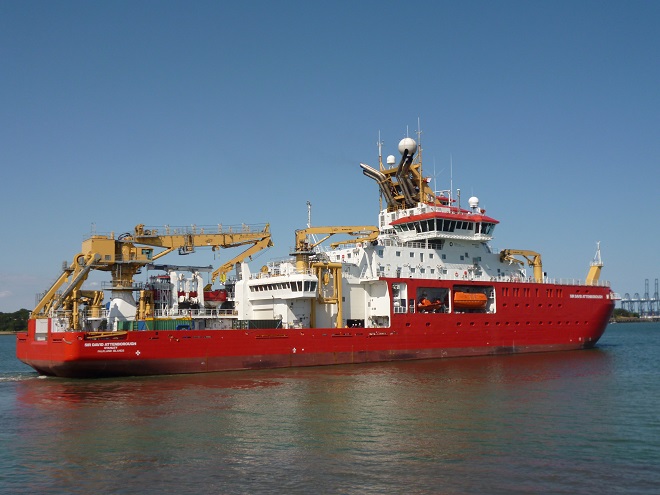
2021
RRS Sir David Attenborough visits Harwich before sailing to London to become the centre point of the British Antarctic Survey's showcase of polar environmental science, engineering and technology, to coincide with the UN COP26 climate talks in Glasgow
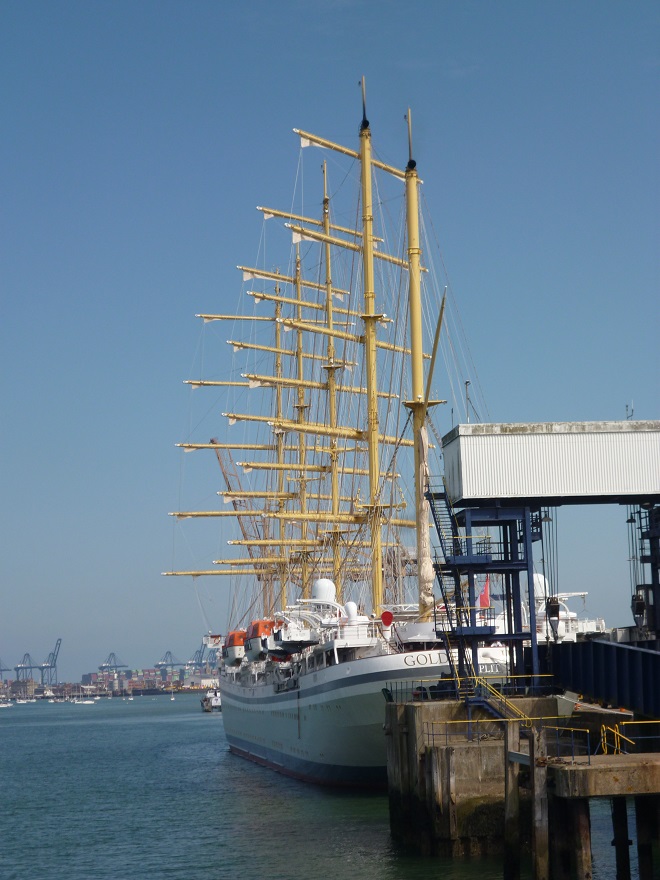
2021
Arrival of the Golden Horizon - the world's largest square-rigged sailing vessel and one of the few sail-powered cruise ships. The first cruise ship arrival since the start of the Covid pandemic
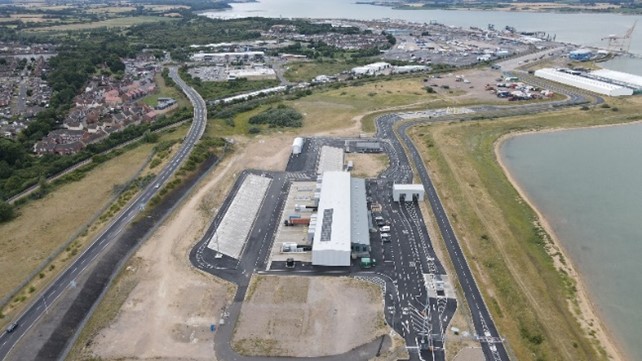
2023
This year saw the completion of the Border Control Point Facility (BCP) at Harwich, funded by Government. Ready for inspections to start in 2024.
